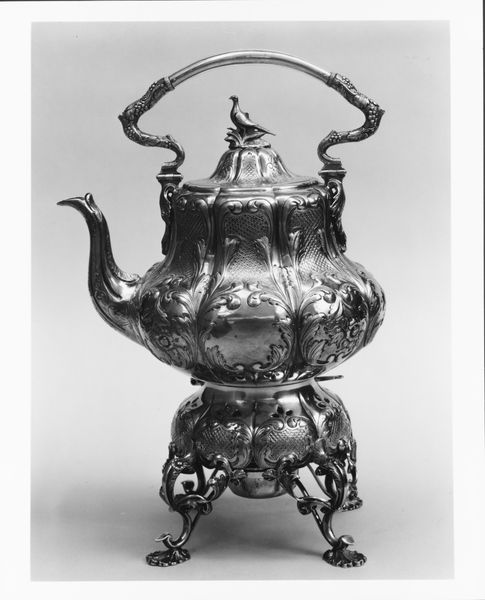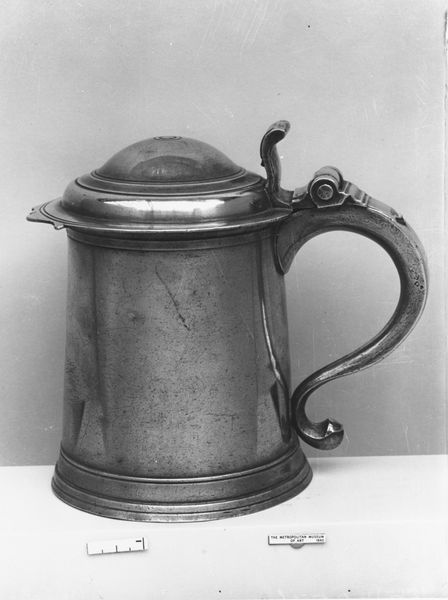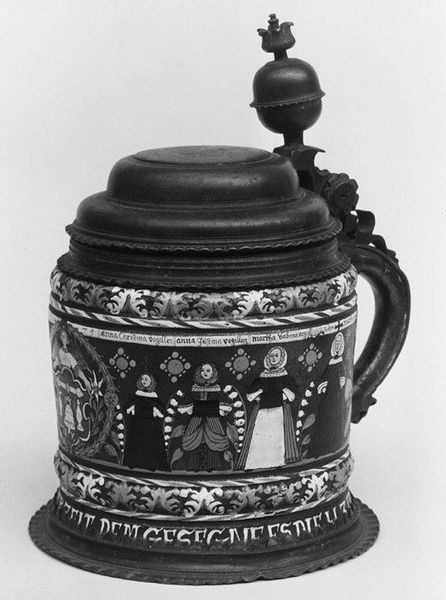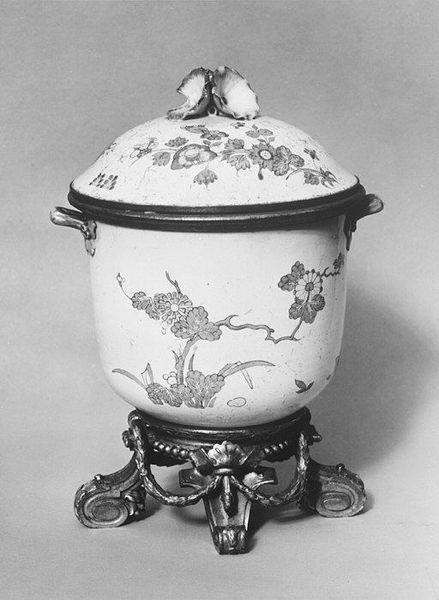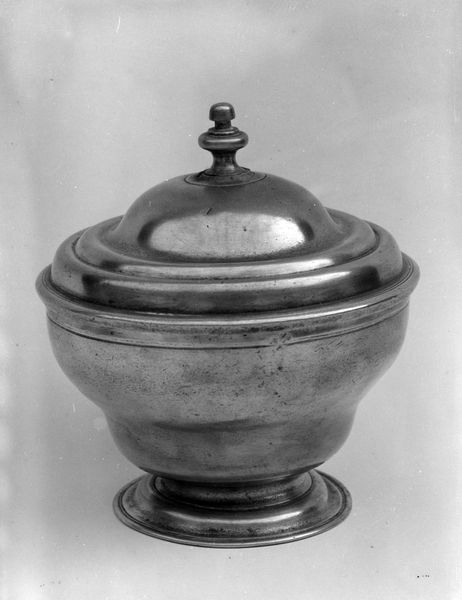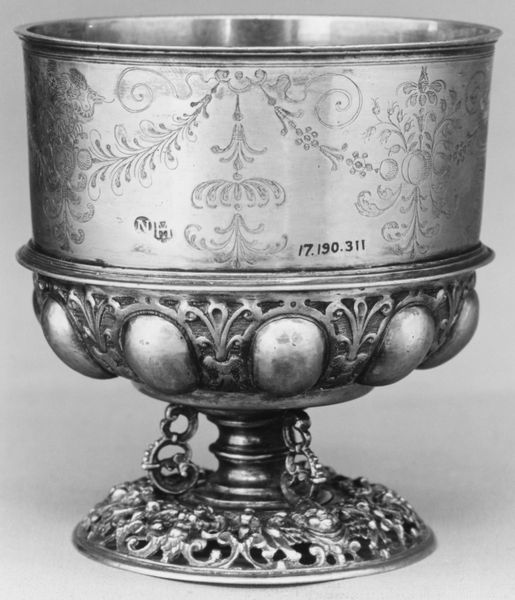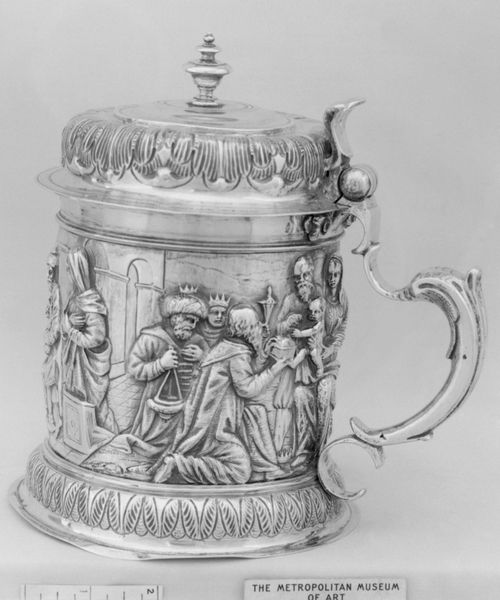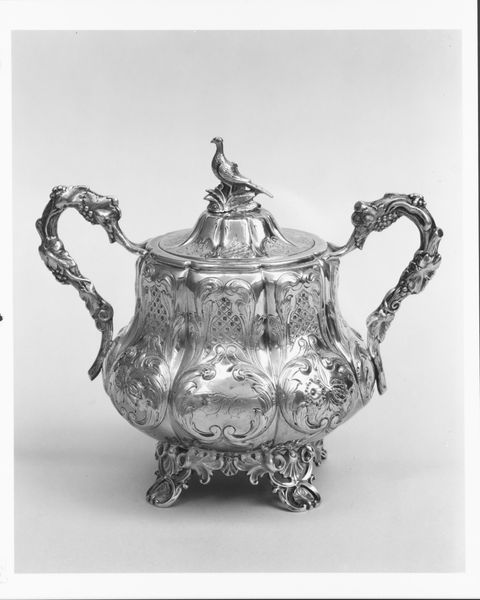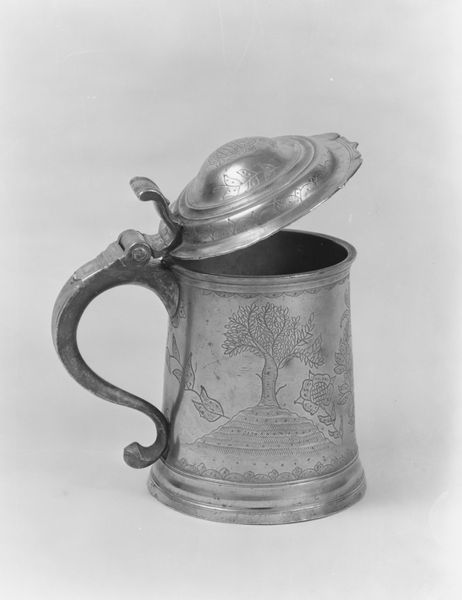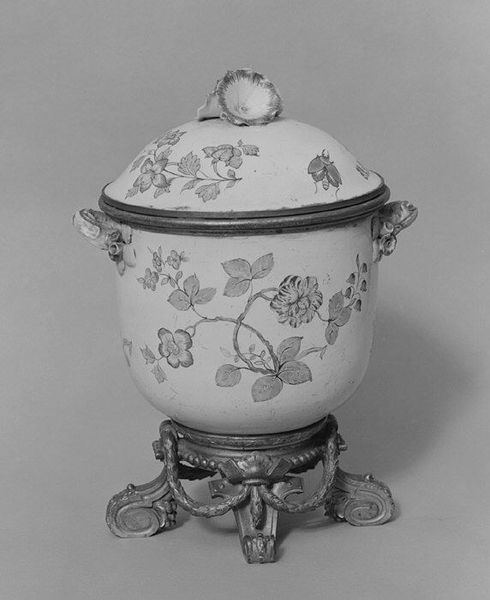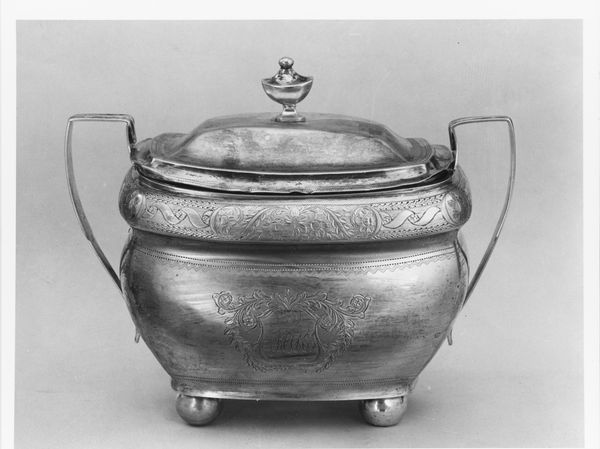
silver, metal, intaglio, sculpture
#
silver
#
baroque
#
metal
#
intaglio
#
sculpture
#
sculpture
#
genre-painting
#
decorative-art
Dimensions: Height: 8 1/8 in. (20.6 cm)
Copyright: Public Domain
Curator: Good morning. We’re standing before a German Tankard, crafted from silver through intaglio. Its creation is attributed to Johann Christian Bierpfaf, dating it somewhere between 1650 and 1699. It’s a remarkable example of Baroque decorative art. Editor: Its elaborate ornamentation strikes me immediately. A playful yet weighty feel comes to mind. All of those swirling patterns fighting for space, finished with a pinecone on top. What can you tell me about this fashion? Curator: These tankards were popular objects in affluent households across Europe. Serving a practical function for drinking beer or other beverages, they simultaneously communicated wealth and social status through the material, in this case silver, and the quality of craftsmanship. The decorative panels reflect genre painting, reflecting scenes from daily life which offered the owner to signal cultivated taste. Editor: So much visual information on this single object, like those narrative reliefs and the floriated designs. It makes the tankard quite the statement piece. Even the handle mimics a sort of leafy, organic growth. Curator: That's right. Bierpfaf and other silversmiths in Augsburg specifically played a key role in transforming the aesthetic values of silverwork across Europe at the time, which can be read alongside similar patterns emerging across Europe from royal houses to municipal halls during the Baroque period. Objects like this were vehicles for elite display and power. Editor: The craftsmanship is remarkable; those figures are delicate. So precise and controlled within the total design! This artist achieved remarkable depth considering they are essentially carving into metal. Curator: The Tankard would have offered people of means a sense of prestige and belonging. Owning pieces like this, especially crafted by well-known silversmiths, affirmed and reinforced the social hierarchy. It was meant to impress. Editor: Yes, thinking of the texture, the reflective gleam of the silver in candlelight, or set out on a formal table—it truly encapsulates luxury. Looking at it this way contextualizes the artistry as beyond the piece itself. Curator: Precisely, seeing art in this way adds so much meaning beyond just appreciating what is directly in front of us, what makes something high art is often an ongoing negotiation. Editor: Absolutely, and thinking about these objects historically reminds us that they represent larger social and cultural frameworks as they still stand today.
Comments
No comments
Be the first to comment and join the conversation on the ultimate creative platform.

